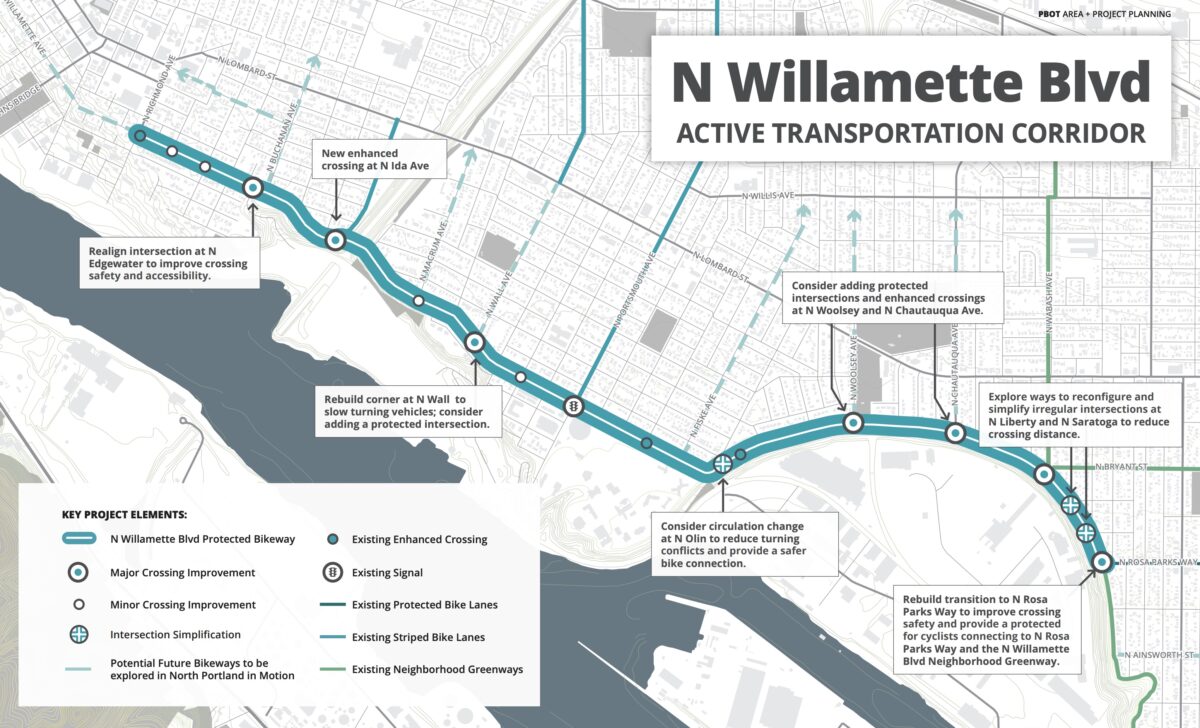
One of north Portland’s most important bikeways is poised for major upgrades.
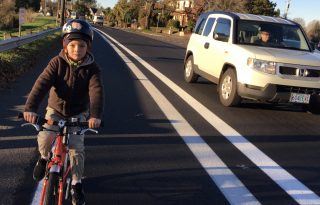
(Photo: J. Maus/BikePortland)
The Portland Bureau of Transportation has launched the Willamette Boulevard Active Transportation Corridor project, which will invest $6 million to update three miles of the street between North Rosa Parks Way and North Richmond Avenue. The project, funded with federal sources via a Metro “regional flexible funds” grant in 2019, will widen and add protection to existing bike lanes and fill gaps where no bike lane exists today.
In addition to better bike lanes, the project will make comprehensive changes to the street that will make it safer and less stressful for all users. Initial plans call for more marked crossings, a lower speed limit (from 30 mph to 25 mph), treatments to simplify and neck-down expansive intersections, bus stop changes, and more. PBOT says their goal is to improve walking, biking and transit and build a “world-class multimodal corridor.”
Advertisement
Once complete, this section of Willamette will connect to new protected bike lanes on North Rosa Parks Way and North Greeley Avenue and create a continuous safe bikeway from the Lower Albina area near Interstate Avenue to St. Johns (via Greeley/Willamette), and from Martin Luther King Jr. Blvd to St. Johns (via Rosa Parks Way/Willamette).
PBOT widened the Willamette Avenue bike lanes between Rosa Parks Way and Columbia Park in 2017 as part a repaving project, but unfortunately left them unprotected. The new project will widen the bike lanes even further and add physical protection (likely in the form of concrete curbs, but final design is still up for debate).
According to initial designs shared by PBOT (above), the southern section of the project (where Willamette is 40-feet wide) will have bike lanes that are seven-feet wide with a three-foot buffer zone. This 10-feet for cycling (and other forms of non-car, personal mobility), would be the same space given to car users, who will have one 10-foot lane in each direction. When the road narrows slightly at N Edgewater Avenue (Cathedral Coffee), the bike lane would narrow to eight feet (five usable feet with a three-foot buffer) and the driving lanes would remain at 10 feet all the way north to Richmond.
“PBOT is excited to have the opportunity to make a major investment to support walking, biking, and transit and build a world-class multimodal corridor in North Portland.”
Currently, bicycle riders have only standard, unprotected and unbuffered bike lanes between N Woolsey (Columbia Park) and Ida (just past “the cut”). The bike lanes abruptly stop north of Ida to Richmond. In November 2018 a man was hit and killed on this stretch of Willamette without a bike lane.
As the primary cycling connection to the St. Johns Bridge, Willamette serves a very high volume of riders. It’s designated as a Major City Bikeway and Major City Walkway in the city’s cycling and pedestrian master plans respectively.
To create room for the bikeway, PBOT will prohibit on-street vehicle parking for the entire length of the project. PBOT says the on-street parking is currently not heavily used, there’s “ample space” on side streets and/or alleyways, and nearly every property on the corridor has a private driveway. Even so, PBOT will be prepared for opposition to any changes to auto parking access. When plans for better bike lanes on this section of Willamette first emerged in 2011, irate property owners forced PBOT to delay the project.
In 2018 a group of Portland State University Masters of Urban Planning students completed a report that included this section of Willamette. After months of outreach to the community, the authors of North PDX Connected found that, “Participants were very concerned about the speed and volume of cars. There are too few safe places to cross N Willamette Blvd, biking in current conditions and facilities is unsafe and uncomfortable, and neighborhood through traffic endangers residents.”
PBOT will kick off a public review and feedback process in the coming months of this year with a goal of creating a final recommendation in 2022. Construction will take two years and is expected to be complete by 2027.
— Jonathan Maus: (503) 706-8804, @jonathan_maus on Twitter and jonathan@bikeportland.org
— Get our headlines delivered to your inbox.
— Support this independent community media outlet with a one-time contribution or monthly subscription.


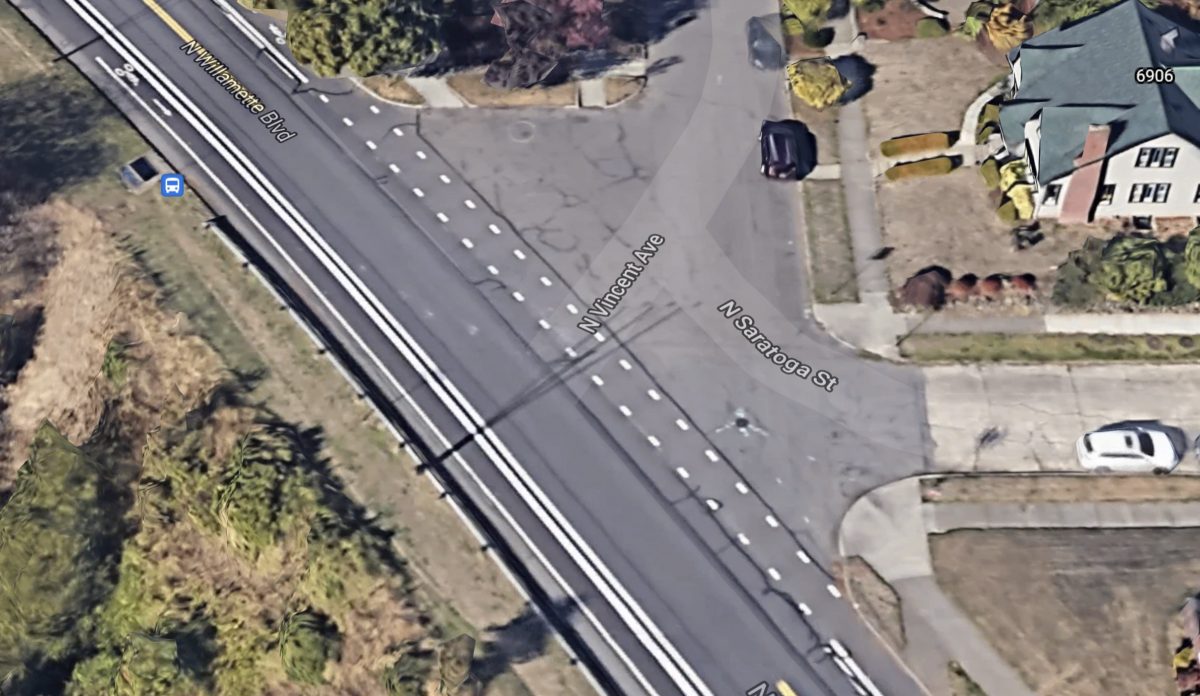

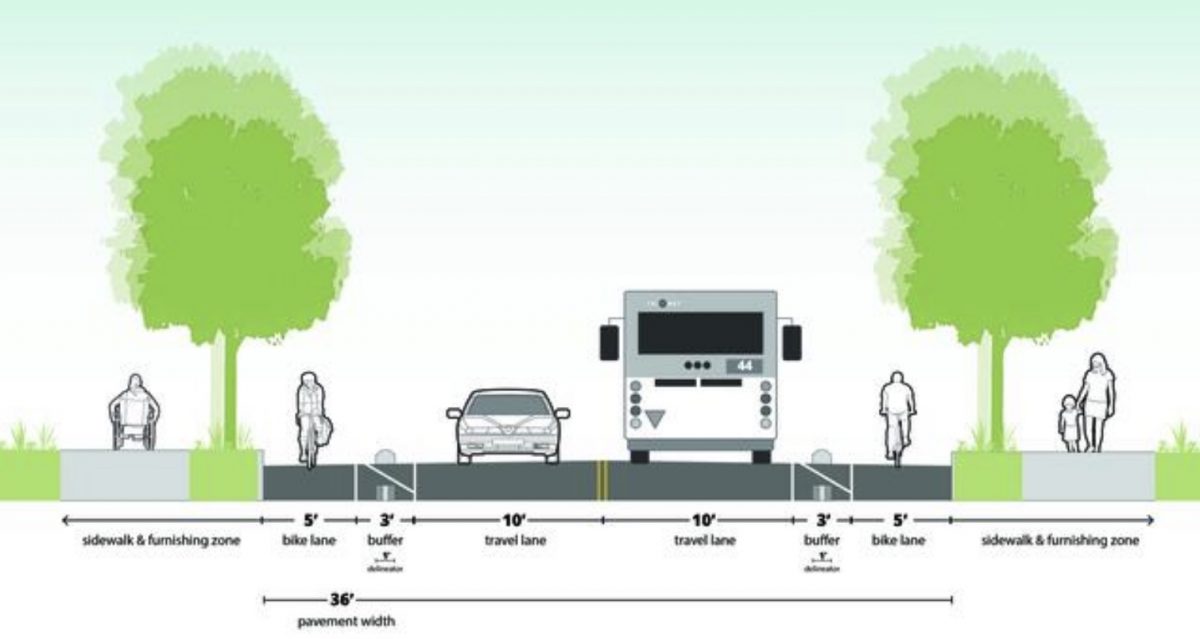
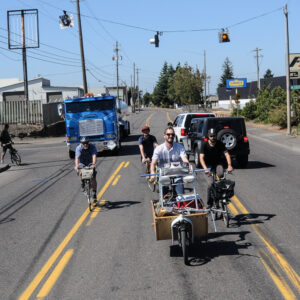
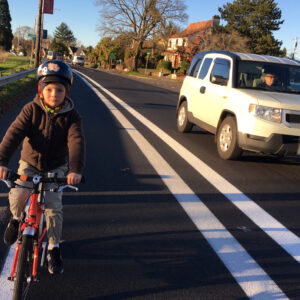
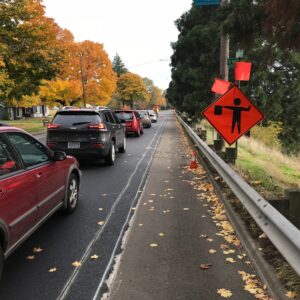
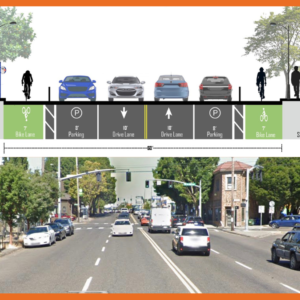
Thanks for reading.
BikePortland has served this community with independent community journalism since 2005. We rely on subscriptions from readers like you to survive. Your financial support is vital in keeping this valuable resource alive and well.
Please subscribe today to strengthen and expand our work.
LOVE the idea of the protected bike lanes! Hoping one day I can ride with my kids across town without being in constant fear for their lives.
I have to laugh at the lower speed limit though. Lowering the speed limit without enforcement does NOTHING! The city of Portland is in complete failure mode with regards to enforcing laws. How does PBOT think lowering the speed limit without any enforcement does any good? Portland need to dish out some “tough love” ASAP before more are killed in traffic violence (and gun violence for that matter).
This site published a story on 12/1/20 on the City’s report showing top end speeds are reduced after a 5mph reduction in posted speed (25 –> 20).
Enforcement is effective but what is your plan to increase enforcement on the City’s 4,000 lane miles of streets?
Improving corridors with design is the best short-term and long-term solution IMO.
We just need to use traffic cameras. They pay for themselves (unfortunately). Arterials get traffic cameras, residential streets get traffic calming infrastructure like traffic diverters and bike bumps.
Now, that’s what we should do, but between the special interest payoffs of the state legislators from the police unions and PBOTs opposition to traffic calming, I doubt it will.
No clue why this isn’t a 2-way bike lane on the bluff side.
It’s nothing yet Allan. This is the start of a public process. If you have better ideas, you have the chance to share them with PBOT and influence the final design. Nothing is set in stone just yet.
It’d be far more convenient on the non-bluff side. Crossing Willamette is hard, especially when motorist are driving 40 – 50 mph.
At the East end of this project, the lanes will connect to existing protected bike lanes that are in either side of the street. If you connect a two way cycle track to existing bike lanes, you’d need some sort of cross over. Better to have the bike lanes continue than to create unneeded conflict with motor vehicle traffic at a cross over point.
I typically don’t like crossover points, but if the lanes were both bluff side you would remove a large number of existing conflict points (every side road) – many of which need to be improved if one lane remains on non-bluff side. With no automotive intersections and views of downtown I think that would be a very nice two-way bike lane.
I’m not a fan of 2 way cycle tracks. Most people have trouble holding a line in a 5′ bike lane with a dashed center line, add passing cyclist into the mix and it increases the stress a lot, at least for me. Let the cars worry about head on collisions. And drs makes a good point, the bike lanes at either end is single lane. A 2 way path would necessitate more car/bike crossings, which are the most dangerous part of any bike infrastructure.
many people enjoy running the bike lanes on Willamette. I hope they consider that when designing. Right now there is no conflict because it easy to just take the lane if space is tight and I don’t want to wait. If the lane is curb-separated, maybe PBOT could put up up signs to ask runners to use the sidewalk?
Runners prefer the westbound bike lanes over the sidewalks for consistent surface and better visibility. And no driveways. Recent times cause me to reconsider the nomenclature of ‘bike lanes’ as they have become more than that to many modes. Safety still influences such decisions.
totally agree. with the new Greeley path crossing in front of Adidas, the opportunity to divert at Killingsworth to the Bluff, and along Willamette all the way to the University of Portland. Agree with JM also, its the beginning of the discussion.
That seems like the best option to me. Combine the Greeley bikeway with a bluff side trail on Willamette, and you could eventually get a three-and-a-half protected bikeway from University of Portland to the Eastside Fremont Bridge interchange, with just a couple of road crossings. There would be opportunities to extend that route both north and south in the future.
This is going to be an incredibly welcome improvement to the cycling infrastructure network in North Portland. I was attacked by a motorist near this stretch of proposed improvements a couple months ago and it has made me think of how the existing design does very little to improve safety for cyclists. Here’s hoping better protected lanes survive to the final design!
That’s awful. We’re you physically assaulted?
I feel like Willamette would have been the perfect corridor for a two-way cycletrack (plus wide sidewalk) on the river side of the road. Almost no cross streets at all, leading to almost-completely-stress-free riding. Any reason why this wasn’t considered?
Because the protected bike lanes on Rosa parks to the east are not a two way cycle track. Your vision would force west bound cyclists to cross over, creating unnecessary delays and unnecessary conflicts with motor vehicle traffic.
having cyclists crossover would avoid conflicts at every side street. Also, many enter from Willamette instead of Rosa Parks who would not need to cross when going north as they currently do. I’d prefer the two-way path as it would be a much more enjoyable ride in that stretch.
But this would then eliminate all conflicts with motor vehicle traffic at all the other side streets the bike lane would cross. I’d gladly make that tradeoff: crossing Willamette at one signal-controlled intersection would be so much better than passing through 30 stop-controlled intersections from side streets where drivers are liable to turn without looking whenever they see breaks in car traffic.
I see the advantage. I used to bike on Willamette daily and I was constantly afraid of getting right hooked when heading westbound. But I would also be frustrated by having to wait for a signal or for a break in traffic to cross over to get to south side if I was coming from Rosa Parks. Seems like there are both advantages and disadvantages to either layout.
Hopefully this will fix the intersection of Portsmouth and Willamette. Motorist making illegal right turns by crossing the bike lane and turning from a parking space is so ingrained in the local driving culture that I see people do it who are the lead car and could just turn right from their lane.
I really like the idea of protected bike lanes, but I often feel somewhat claustrophobic in the one on Rosa Parks. You’re constantly pushed into the rain gutters and whatever happens to be in the bike lane. Passing generally means you have to leave the lane through a weird gap in the curbs and jump back in another.
I wish I could offer a middle of the road solution, but I don’t really have one. Though at a minimum some barrier between bikes and cars encourages the cars to not drift over the lane, which is a big upside.
This is so much too late, Willamette is a potential death trap from Ida west to Richmond and we have to wait 5 years for improvement? How about at least restriping with some f’ing bike lanes, ASAP, in the interim.
Is this correct: “PBOT will kick off a public review and feedback process in the coming months of this year with a goal of creating a final recommendation in 2022. Construction will take two years and is expected to be complete by 2027.”
Shouldn’t the completion date be 2024? Asking for someone (me) who can’t wait until 2027!
That’s the date they are saying right now. I assume it has something to do with the fact that it’s a federal funding source. I’ve asked for more clarification and will update the post when I hear back.
Please do, Jonathan. Projects like this are way too important to require eight years to advance from funding to completion. (Or longer, if delayed.)
Just to be clear here, the “protected” bike lanes would do nothing if a driver careens off the road like that drunk guy did in 2018. He was going 80mph, according to witnesses, when he jumped the curb and killing the pedestrian who was on the sidewalk.
Nothing against the little angled curbs used on Rosa Parks, and presumably a likely option for this protected lane. But they’re not going to do anything to stop an out of control car from jumping into the bike lane. Any car going normal road speeds will mount even a 6″ square edged curb if it veers off the road. It might mess up the suspension and tire, but the car will do it.
That is a similar thought to what I have in a comment above. The diverters keep the drifters our though, people that roll along with one tire or more over into the bike lane.
A drifter could easily push a cyclist over into the curb or object in the bike lane. I had an accident like this years ago where a trail doing an extra wide turn took all my focus and I hit a brick or rock on the shoulder (it was a country road, not a bike lane).
However, at that point its a pick your poison of bike lane drifters or being “trapped” in a protected lane. Personally I think protected lanes along routes downtown or other high traffic areas are correct in getting protected lanes. But Willamette being fairly open and popular with faster, more sport oriented riders would probably be better with just a big buffer.
So long as debris aren’t allowed to pile up in the bike lane, I expect to feel a lot safer once this stretch is protected.
Cool project, looking forward to seeing it come to life!
Even as proposed it is still not safe for younger riders unless they are with an adult.
I’ve linked to some personal photos that shows how deadly this has been to ride the last few years. I live nearby. The new proposals fall very short.
I agree with many people here that this should be a two way protected cycle track on the bluff side of the road. (river side) It would be zero conflicts. People who need to leave the cycle track can dismount at a crosswalk. It only takes a second.
Photos below. About 4 years ago cars would often squeeze me at 40 miles per hour at Willamette and Oswego. I sent in photos to complain and the city lowered it from 35mph to 30. Baby steps from PBOT. I consider this proposal too little too late.
Google map link click here
Link to my personal photo. Click here. The mini van was going 35 but at least he moved to stradle the yellow center line as he flew past me.
We have lawmakers who just authorized billions more spending on the day we had a record heat wave.
Finally. I don’t care what they do long as it involves putting a bike lane from the track crossing to Richmond. Been passed unsafely, yelled at and threatened so many times. Such a terrible conflict zone.
Maybe they’ll even repave Richmond to Burlington, since that is such paving is such a hack job.
Hi there:
I live on Willamette Blvd and will be impacted by this project. We own 2 cars, a small travel trailer and I also have an antique car. I also ride a bike. I think that this is a great idea. It will, on occasion, make parking a bit more difficult but I think that it will be a a great addition to the neighborhood. If I, with 3 cars and a trailer, can work through this than no one else should have any complaints. Good job PBOT!
Please o pretty please!!!!! Just some paint and rumble strips down from N. Ida into St. Johns. The ease of the rest of the Willamette directs cyclists (especially inexperienced ones) into harm’s way esp on the curves just after the bridge. I too have been harassed on this stretch and nearly gotten doored by excited coffee goers. We have been waiting too long for this crucial portion to be finished. Meanwhile, I have the uninspiring, tiny, loud, and ugly Lombard bike lanes that don’t take me to St. Johns either!!! Lanes to nowhere.